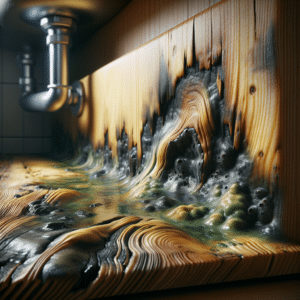
In our previous article, we discussed some of the common causes of sewage back-ups. With that knowledge in mind, we will show you some of the steps you can take to help prevent sewage back-ups from flooding and damaging your home or property.
Keep Your Drains Clog-Free
As we previously mentioned, clogged drains are often the main cause of sewage back-ups. Luckily, this cause is also the easiest to avoid. You just need to follow these simple steps to keep your drains clog-free:
- Only flush toilet paper as it’s designed to break down when exposed to water and flow freely through your pipes. Anything larger or thicker than toilet paper (tissues, napkins, paper towels) will get lodged in the sewer line and cause a back-up.
- Avoid using “flushable” cleaning products. Although they claim to disintegrate or dissolve with water, these brushes and wipes stay intact. They’re actually thicker than paper towels and can cause major clogs and back-ups.
- When cleaning up after dinner, do not empty food waste/particles, oils or any fat (especially bacon fat) down the kitchen sink. These particles will accumulate and create blockages which will cause messy back-ups. A sink strainer can help prevent particles from accidentally falling into the drain.
- Keep your bathroom sinks and bathtub/shower drains clear of hair and soap/shampoo residue. Much like food waste, these particles will accumulate over time and clog the drains. Be sure to use a sink/tub strainer or screen to prevent hairs and particles from accumulating in the drains.
Get To The Root Of The Problem
Tree roots are one of the most common causes of sewer line breaks and cracks. As trees and shrubs require water to grow and thrive, their roots are always on a mission to find a viable water source of water. Unfortunately, the moisture emitted by sewer lines is often one of these sources. Once they locate the pipes, the roots will wrap themselves around the pipe, putting tremendous pressure on it. That pressure will eventually lead to cracks or breaks in the pipe.
To avoid this scenario, property owners should never plant trees or shrubs in close proximity to the sewer lines. If the previous owner did not follow this advice, then it’s best to remove the existing trees or shrubs as soon as possible before their roots harm your sewer lines and plumbing.
Replace Old Sewer Lines
Unless they have had extensive repairs or renovations, most older homes and buildings are still relying on sewer lines made from materials that are more vulnerable to cracks and breaks. Time and nature’s many elements have likely weakened the integrity of these clay, cement or iron pipes. When that’s the case, it’s only a matter of time before they experience cracks or breaks.
Removing and replacing old sewer lines with new, industry-standard plastic lines will help protect your property from flooding and water damage caused by faulty or broken sewer lines.
By taking the above measures, you’ll be practicing first-rate sewage back-up prevention. However, you can never completely protect your property from flooding and water damage related to sewage back-ups, faulty appliances, clogged gutters and spouts, or acts of nature.
In the event of a flood or water damage emergency, call FloodCo USA!
Our team of IICRC certified technicians are ready 24/7, 364 days a year to remove harmful water from your property and dry and restore it – without ripping and removing.
Contact us today to learn more about our entire line of services.



